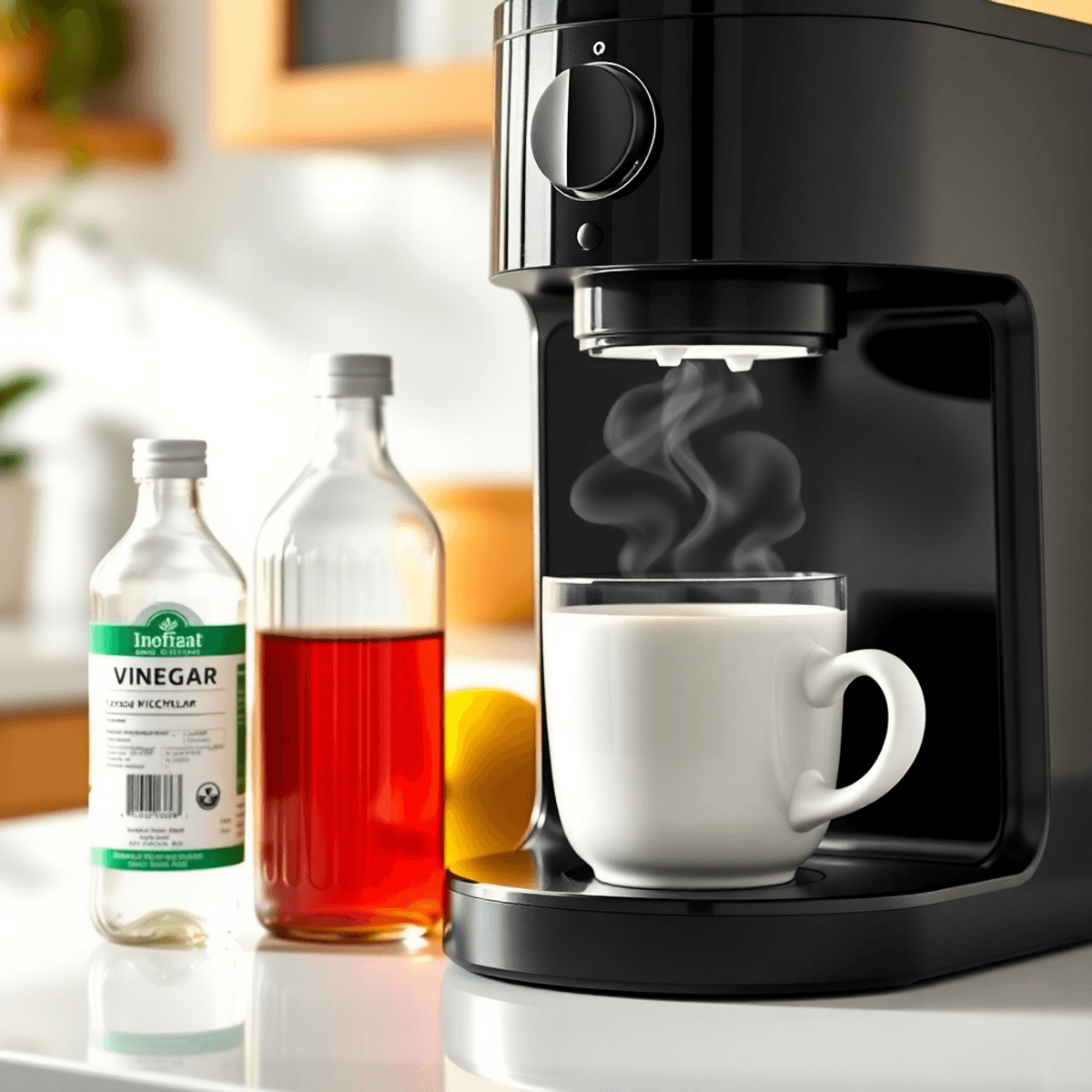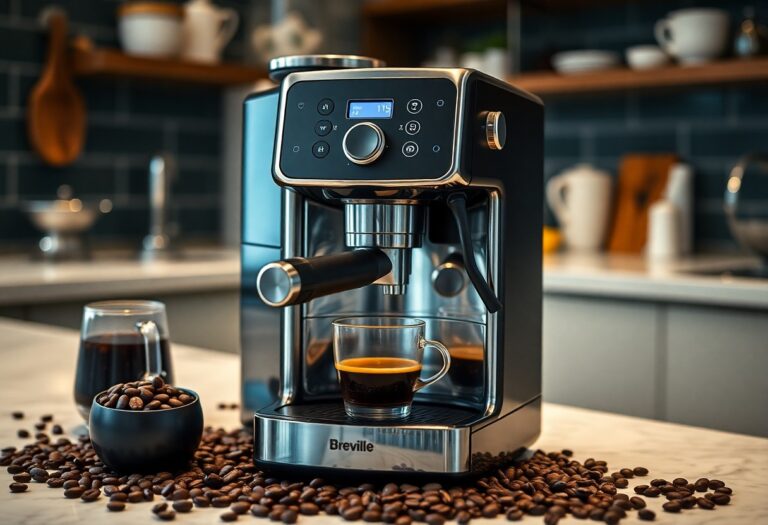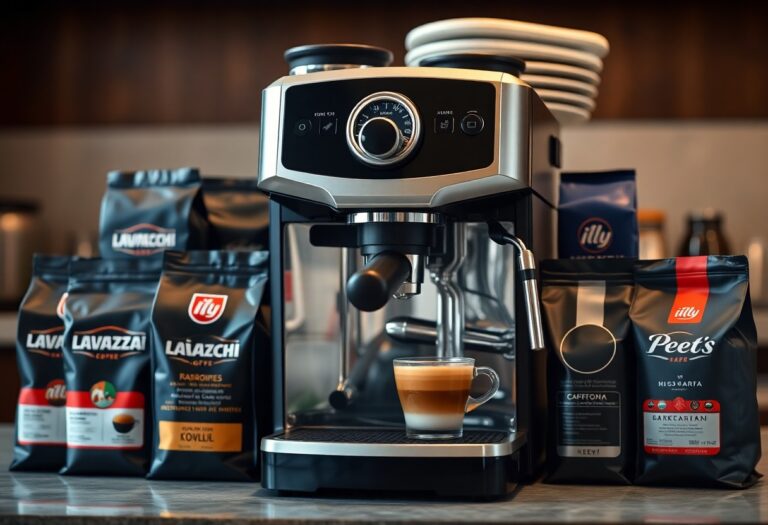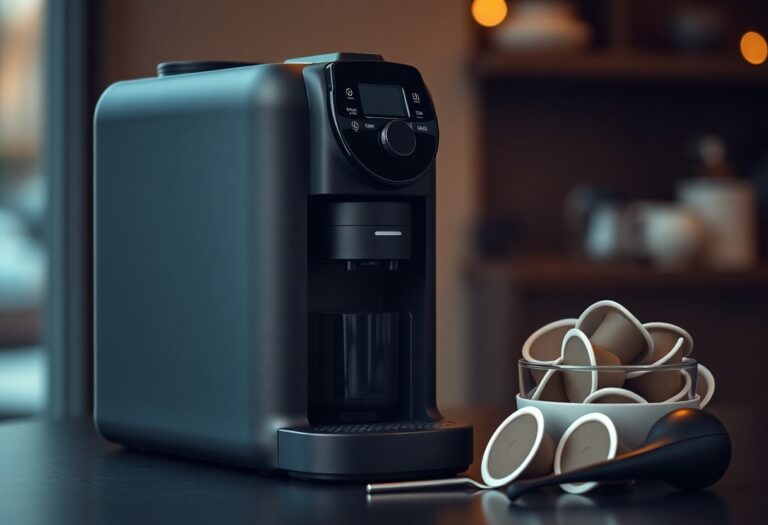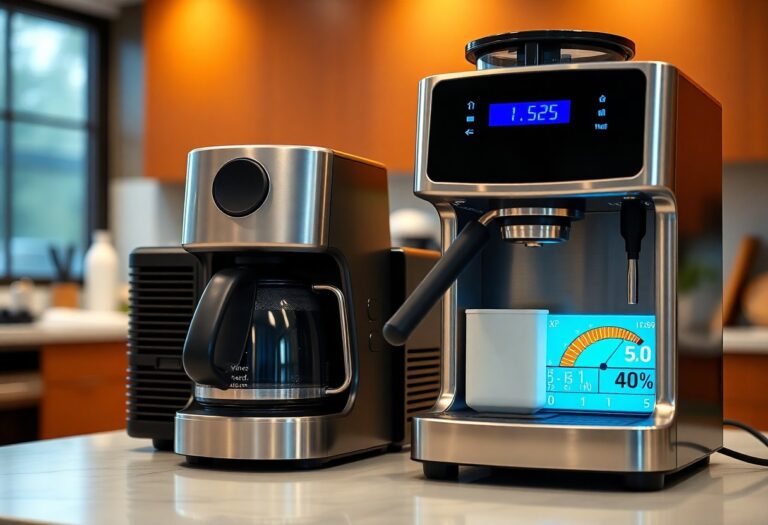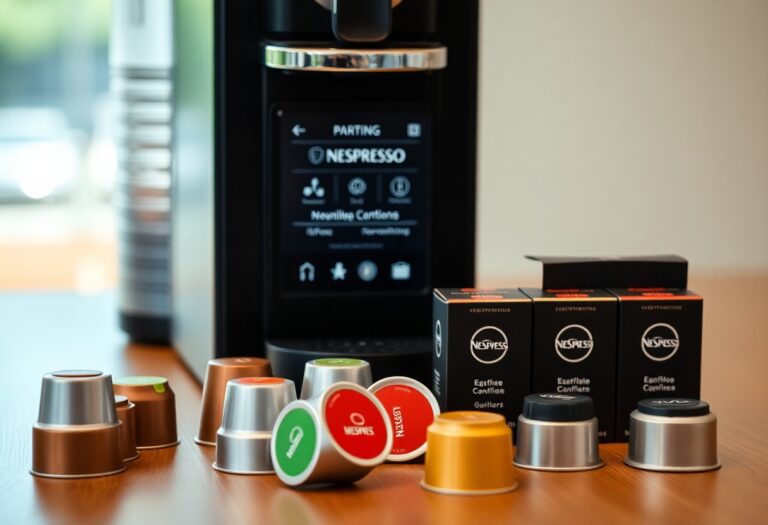How to Clean a Coffee Machine with Vinegar: Natural Cleaning Method
Vinegar is a natural and affordable way to clean your coffee machine. It’s an eco-friendly solution that effectively removes mineral deposits, oils, and residues that can affect the taste of your coffee and the performance of your machine.
Cleaning your coffee maker with vinegar has several benefits:
- It helps prolong the life of your appliance.
- It ensures each cup of coffee brewed is fresh and flavorful.
- It provides a safe alternative to harsh chemical cleaners.
- It promotes a healthier environment in your kitchen.
By incorporating vinegar into your regular maintenance routine, you can enjoy both a clean coffee machine and the peace of mind that comes with using a natural cleaning solution.
Why Regular Cleaning is Essential for Your Coffee Machine
Effects of Mineral Deposits and Oils on Machine Performance
Over time, mineral deposits from water and oils from coffee beans can accumulate in your coffee machine. These buildups can clog the internal components, affecting the machine’s performance by causing slower brewing times or even complete malfunctions.
Impact on Coffee Flavor and Aroma
The presence of limescale and oil residues not only hinders the machine but also alters the taste and aroma of your coffee. These impurities can give your brew a bitter or stale flavor, diminishing the quality of your favorite morning pick-me-up.
Benefits of Routine Cleaning for Longevity and Efficiency
Regularly cleaning your coffee machine helps prevent limescale buildup, ensuring that it continues to function optimally. By maintaining a clean system, you not only extend the lifespan of your coffee maker but also guarantee a consistently delicious cup of coffee every time. Regular maintenance is key to preserving both the quality of your brew and the longevity of your machine.
The Power of Vinegar: A Natural Descaling Agent for Coffee Machines
Distilled white vinegar is a powerhouse when it comes to natural cleaning solutions for your coffee machine. Here are some key points highlighting its effectiveness:
1. Properties of distilled white vinegar
- Acetic acid in vinegar helps dissolve mineral deposits and oils that can build up in your coffee maker over time.
- Its acidic nature makes it a potent descaling agent, breaking down limescale and residue without harsh chemicals.
2. Comparison with chemical cleaners
- Unlike chemical cleaners that may leave behind harmful residues or odors, vinegar provides a safe and eco-friendly alternative.
- Vinegar is equally effective in removing buildup without posing any health risks or damaging the environment.
3. Environmental benefits
- Using vinegar as a cleaner reduces the need for harsh chemicals, promoting a more sustainable and eco-friendly approach to cleaning.
- It minimizes the impact on the environment compared to traditional cleaning products, aligning with green living practices.
Step-by-Step Guide to Cleaning Your Coffee Machine with Vinegar
When it comes to cleaning your coffee machine with vinegar, following a systematic approach ensures effective descaling and maintenance. Here is a detailed step-by-step guide to help you through the process:
1. Preparing Your Coffee Maker
- Start by ensuring your coffee maker is unplugged and cool before beginning the cleaning process.
- Empty the water reservoir and remove any remaining coffee grounds or filters.
- Take out the carafe and filter basket for separate cleaning later.
2. Mixing the Correct Vinegar-to-Water Ratio
Prepare a cleaning solution using either a 1:1 ratio of distilled white vinegar to water for regular cleaning or a 1:2 ratio for deeper descaling. If you’re using a Keurig coffee machine, consider following specific guidelines for optimal results.
3. Running the Brewing Cycle
Fill the water reservoir with the vinegar-water solution. Start a full brewing cycle without coffee grounds, allowing the machine to run as if making a regular pot of coffee. This helps circulate the solution throughout the internal components. For machines like espresso machines, ensure to adjust settings accordingly.
4. Allowing Solution to Sit
After completing the brewing cycle, turn off the coffee maker and let the vinegar solution sit inside for about 15–30 minutes. This dwell time aids in breaking down mineral deposits and stubborn residues, especially useful for models that require deeper descaling.
5. Rinsing with Fresh Water
Run multiple rinse cycles using fresh water through the brewing process. Ensure no traces of vinegar smell or taste remain in the machine after rinsing thoroughly.
By following these steps diligently, you can effectively clean your coffee machine using vinegar as a natural and safe cleaning agent, maintaining its performance and extending its lifespan. If you own a Krups coffee machine, you might need to follow additional specific maintenance guidelines.
Cleaning Removable Parts Separately: Ensuring Thorough Maintenance for Your Coffee Machine
Importance of Washing Removable Parts
It is crucial to clean removable parts such as the carafe and filter basket separately to ensure thorough maintenance of your coffee machine. These components often accumulate coffee oils, residues, and stains that can affect the taste and quality of your brew. Neglecting to clean them can lead to a build-up of bacteria and mold over time, impacting both the machine’s performance and the flavor of your coffee. By regularly cleaning these parts, you can prolong the lifespan of your coffee maker and enjoy consistently delicious coffee.
Using Warm Soapy Water
When cleaning removable parts like the carafe and filter basket, using warm soapy water is highly effective in removing built-up oils and residues. The combination of gentle dish soap and warm water helps to break down stubborn stains and ensures a thorough clean. Be sure to scrub all surfaces of the carafe with a non-abrasive sponge or brush to eliminate any lingering residues effectively. Rinse them thoroughly with clean water to remove any soap residue before reassembling them back into the machine.
Drying and Reassembling Parts
After washing the carafe and filter basket, it is essential to dry them completely before reassembling them into your coffee machine. Use a clean dish towel or air dry them upside down on a drying rack to prevent any water spots or moisture accumulation. Ensure that all parts are completely dry before placing them back in the machine to avoid mold growth or funky odors in your next brew.
By incorporating regular cleaning of removable parts like the carafe and filter basket into your coffee machine maintenance routine, you can ensure optimal performance, extend the life of your appliance, and savor fresh-tasting coffee with every brew.
For more specific instructions related to cleaning a K-cup coffee machine or tips on using a filter coffee machine, refer to these resources for comprehensive guidance.
Tips for Effective and Safe Coffee Machine Cleaning with Vinegar
1. Cleaning Frequency Recommendations
It is advisable to clean your coffee machine with vinegar every 1 to 3 months, depending on how frequently you use it and the hardness of the water in your area. Regular cleaning helps maintain the machine’s performance and ensures that your coffee tastes fresh and flavorful.
2. Avoiding Damage from Vinegar
While vinegar is an effective natural cleaner, prolonged exposure can potentially damage certain components of your coffee machine. To prevent this, always follow the recommended cleaning process and do not leave the vinegar solution in the machine for longer than necessary.
3. Maintaining Coffee Taste Quality
After cleaning your coffee maker with vinegar, it is crucial to rinse it thoroughly to remove any lingering vinegar smell or taste. Running a few cycles with fresh water ensures that no traces of vinegar remain, preserving the true flavor of your coffee. Remember, a well-cleaned machine leads to better-tasting coffee every time.
Exploring Other Natural Cleaning Alternatives for Your Coffee Machine
When it comes to eco-friendly coffee maker care, vinegar isn’t the only natural option you have. Here are two popular alternatives you can consider:
1. Baking Soda Cleaning Method
Baking soda acts as a gentle abrasive and deodorizer. Mixing a small amount with water creates a mildly alkaline solution that can break down grime and neutralize odors inside your coffee machine. It’s especially useful for cleaning removable parts like carafes and filter baskets.
2. Lemon Juice Descaling Alternative
Lemon juice contains citric acid, which effectively dissolves mineral deposits much like vinegar does. Its fresh scent leaves less residual odor, making it a preferred choice for those sensitive to vinegar smell. Use lemon juice diluted with water in the same way as vinegar to descale your machine.
These natural methods provide options tailored to different preferences and sensitivities, all while maintaining an environmentally conscious approach to machine maintenance.
Conclusion
Having a routine for regular maintenance benefits your coffee machine by preventing buildup and preserving its efficiency. Using vinegar as shown in How to Clean a Coffee Machine with Vinegar: Natural Cleaning Method provides a safe and natural cleaning method that protects internal parts without using strong chemicals. This simple practice improves the taste and smell of every cup, giving you a better coffee experience every day. Taking care of your machine means enjoying better coffee and making your investment last longer—an easy habit with great rewards.

